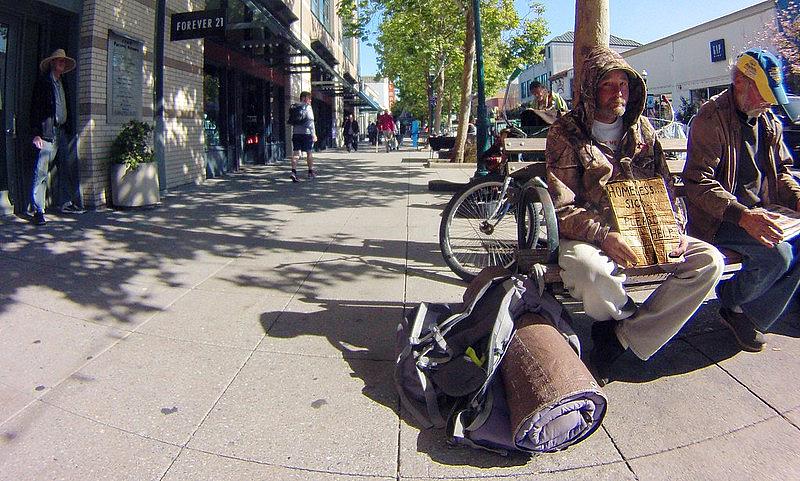Casting a spotlight on the health impacts of homelessness in Santa Cruz County
Life on the streets of Santa Cruz County is never easy. But by one telling metric, 2019 was a tougher year for the homeless than the year before.
Last year, Santa Cruz County’s homeless population had 58 reported deaths. That was an increase of three deaths over 2018. Homeless individuals die at a rate four times higher than the average county resident. The average age of a homeless individual who died last year was 53 years old — 22 years younger than the average resident who passed away.
“Housing contributes years to our lifespans, and being homeless at some point in your life literally takes years off,” remarked David Davis, an administrative aide for the Homeless Persons Health Project, as he spoke at the county’s 21st Annual Homeless Memorial this past December.
Many of the health challenges faced by the homeless community are no mystery. According to Santa Cruz County’s 2019 homeless census, 30% experience addiction, 26% have physical disabilities, and 21% suffer from chronic illness. Many suffer from traumatic brain injuries or are HIV-positive. One in 127 Santa Cruz County residents is homeless, according to that same census, which is considered to be an undercount of the area’s homeless population.
The Santa Cruz County’s large homeless community also has the potential to affect the local population at large. In 2017, Santa Cruz experienced an outbreak of Hepatitis A, with 71 confirmed cases. The disease spread out of homeless circles and into the wider community. This past January, Santa Cruz County health officials began sending emails about a local outbreak of shigellosis. Both of these diseases can be transmitted by human waste.
Often due to a lack of facilities, homeless individuals relieve themselves on sidewalks, in bushes and on private property. Currently, the county’s only 24-hour public bathrooms are portable toilets, which aren’t accessible to those with disabilities, and they’re all clustered in the downtown area.
Meanwhile, homelessness poses other possible health threats, and there’s no consensus on how to cut down the risk. Harm-reduction activists have been pushing for an expansion of naloxone distributions to prevent overdose deaths and syringe exchanges to reduce the spread of HIV. The Harm Reduction Coalition of Santa Cruz County is waiting to hear back from the state about the status of an application to do just that. These efforts have been met with resistance from more conservative neighborhood groups.
There are also broader social justice issues layered over the suffering that the county’s homeless population experiences. Homelessness disproportionately affects people of color in Santa Cruz County. For instance, the share of local homeless who are African American is five times higher than the percentage of the county’s population, as a whole, that identifies as black, according to data from the Santa Cruz County Homeless Census and Survey and the U.S. Census.
On a policy level, Santa Cruz County nonprofit and government leaders have pursued a housing-first strategy to combat homelessness. That means prioritizing case management to help homeless individuals secure Section 8 housing vouchers, guiding them off the streets and finding them places to live. A homeless person may wait years for a voucher.
But because of a severe housing shortage and stigmas surrounding the homeless, the vouchers often expire before voucher holders are able to find a place to live. That sends people in need to the back of the line all over again. Hundreds have nonetheless been housed using this strategy, but no one knows if the program is working long-term or tracking how long these formerly homeless individuals are staying in their new homes, because no one is studying it.
Being homeless is a tremendous health risk, and it puts a serious strain on the broader community. Good Times, a Santa Cruz weekly, plans to report on these issues, and we’re grateful for the opportunity this grant affords us.
I can hardly wait for the 2019 California Fellowship at USC, where I’ll learn more about reporting tricks and skills to better tell this story.

